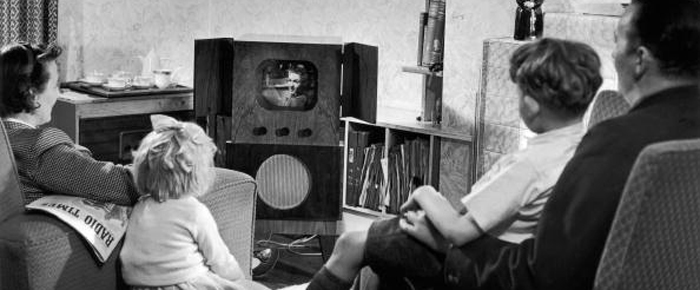
By Haddon Libby
The television, once dubbed the ‘idiot box’ by John Updike, is undergoing its greatest changes since its inception in the 1940s. When television debuted nearly 70 years ago images were blurry and televisions were only 10-14” in size. The cost of a television was six weeks of salary. For those with television sets, families huddled around the blurry images to watch their favorite shows live or real time.
While the price of a television came down over the next generation, the advent of color television in the 1960s drove the price back up to six weeks salary while the average screen size grew by 50% to an average 21”. The number of channels also increased from two or three to five or six by the 1970s with ABC, CBS and NBC accounting for 90% of all viewership.
A decade later, cable television came to prominence and increased the number of channels availed to viewers to forty-five although people only watched, on average, only seven. The remote control also came into widespread acceptance as did the VCR and video games. The VCR was the beginning of ‘time shifting’, a practice where people record and watch their favorite shows when it is convenient to them.
By the 1990s, television size had grown to 27” for most with 25% of homes having a television larger than 30” and 17% having a set above 40”. This is also when Internet service came into our homes.
Today, 32” televisions sell for as low as $150. High speed internet, wireless networks, DVRs and ‘Over The Top” services like Netflix, Hulu, Amazon and iTunes all present reasonable alternatives to cable/satellite television. While 40% of all television viewers have used one of those ‘Over The Top’ viewing options over the last month, 70% of people under 35 have used at least one of these services with 12% of those under 35 getting all of their content in this manner. Of those with Internet service, 60% have cable/satellite television. Of the remaining 40%, 23% have cancelled cable/satellite television for ‘Over The Top” only homes.
The conversion to alternative viewing options is advancing rapidly as 44% of all homes have at least one television connected to the Internet with 29% using YouTube and 22% streaming Netflix weekly.
All this has resulted in a rapid decline in ‘live’ television viewing. This is indicative of a big shift in future viewing trends. Sports are the one thing that continues to draw ‘live’ viewing. Last year, nine of the top ten shows for the year were football (the other was the Academy Awards). Live viewing is important to advertisers as viewers tend to fast forward past advertisements on recorded programming. This is wreaking havoc with broadcast networks similar what has happened to newspapers over the last decade. As newspapers cut staff and local content to deal with lowered ad revenues and subscriptions, networks have increased minutes of advertising per show. In both cases, the changes may make short-term financial sense but help drive consumer preferences to alternative content services.
So what does the future look like? When the average cable bill is $70 and Over The Top options are 10% of that cost, look for the continue march away from the current broadcast model. Many believe that your television will soon have a home page similar to Google, Yahoo! or Bing where you choose the programming that you want when you want it from your customized home page.
Given the large profits made by cable/satellite providers and broadcast networks, expect that more nimble companies like Google, Apple and Netflix will provide better, less expensive choices to us in the not too distant future.








































